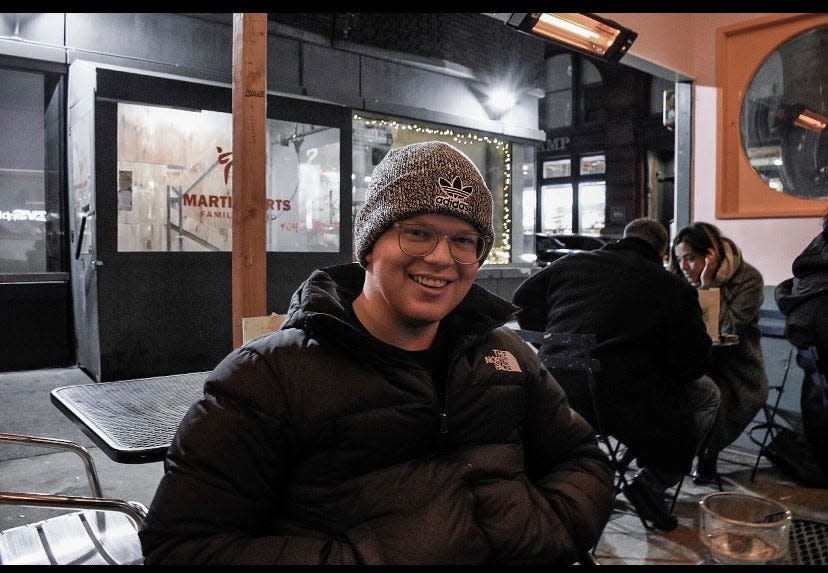Bidding wars in NYC: Tenants scramble for apartments, rents skyrocket as COVID deals vanish
In September 2020, Thomas Ferry scored a studio apartment in Manhattan for $1,950 a month, just as pandemic-weary New York City dwellers were fleeing to their vacation homes or reclaiming their childhood bedrooms in the suburbs.
Last May, right before references to the "hot vax summer" began taking root, he was able to renegotiate the rent down to $1,750 for a one-year lease, starting in June.
As fully vaccinated people began flocking back to the city, Ferry, 27, who works in advertising at the live-streaming service Twitch, knew his COVID-19 rental deal would not last. Before the pandemic, his apartment would have been rented in the $2,400-a-month range.
Sure enough, in February, he received a letter from his landlord saying that his rent would be going up when his lease expired in May. In New York City, landlords are required to provide notice to tenants if they intend to raise their rents by more than 5%.
What he was not prepared for was the rate of increase: a whopping 43%.
His new monthly rent spiked to $2,500 for a 12-month lease, or $2,424 if he signed a 14-month lease.

LIVING THE NYC DREAM: How remote work is helping young workers live their best lives
RENTALS: Apartment hunting? Here are the 10 cheapest cities for renters
MOBILE HOMES: Manufactured houses deliver the American dream amid tough housing market
“I had heard of other people getting increases like, you know, 15%, or 20%, something like that, even up to 30%,” Ferry says. “A 40% increase is just ridiculous. Honestly, it’s like the largest increase I've heard of anyone, whether it's on social media or friends.”
The pandemic rental market in New York City, which was characterized by a precipitous drop in prices and unheard-of deals, is ending with a thud – as rents are surging again. And it's delivering a rude shock to New Yorkers who had recently enjoyed steep discounts and landlord concessions in a city long known for its jaw-dropping rents.
Are rents going up?
Nationwide, rent prices have also skyrocketed, jumping 20% annually in January in the nation’s 50 largest metropolitan areas, according to a recent Realtor.com report. In Manhattan, rents were up almost 30% year-over-year in February.
It's quite a reversal from the pandemic's depths, when the inventory of apartments rose 200% and rents fell by more than 20% in Manhattan, forcing landlords to offer incentives such as paying the broker fee, offering one to three months of free rent and perks such as free gym membership and storage in buildings.
Now, those concessions have largely disappeared, and the average rents in Manhattan are 11% higher than pre-pandemic levels, according to a February report by Douglas Elliman Real Estate, prepared by real estate appraiser Jonathan Miller.
TOOLS FOR RENTERS: 5 easy fixes so renters can get back their security deposits
Vacancy rates for February fell to 1.3% in Manhattan, the lowest recorded for the month of February since 2008. And the bidding wars are back: 17% of all rentals were fought over in February compared with 1% of the apartments before the pandemic.
“You get a sense that the city is really ramping up,” Miller says. “I think it says a lot about urban centers that were written off early” in the pandemic.
As things normalize, urban rental markets will continue to strengthen, and the rapid rebound is an indication that the U.S. housing market will not be moving into an all-suburban market, Miller says.
Where do people live when they do remote work?
“The perception with remote work is people living in the suburbs, but the reality is that there are just as many people working remotely in the city as there are in the suburbs,” he says.
In San Francisco, rents plunged 35% during the pandemic.

Inna Rubinchik, an agent for Compass Realty who specializes in the neighborhoods of Cow Hollow, Presidio Heights, and Pacific Heights in northern San Francisco, says an apartment she’d listed in November 2020 for $5,300 sat on the market for three months. After 29 tours, it finally rented for $3,500, a 34% decrease.
People who were paying thousands of dollars for small apartments in up-and-coming districts could now afford nicer neighborhoods and larger apartments. Tenants were also seeking accessible outdoor recreation.
Places with easy access to parks and beaches were also suddenly more affordable.
"For example, Sunset, which is one of the largest San Francisco neighborhoods, is by the ocean," she says. "And it's never been as popular as it has been in the last couple of years because that's where the beach is.”
How is the rental market now in San Francisco?
But rent growth is slowly gaining momentum in San Francisco.
The median price for a one-bedroom was $3,516 in January 2020, and had plunged 26% to $2,600 in April 2021. This March, the median one-bedroom in the city priced for $2,903, up 12% from almost a year ago but still 17% below pre-pandemic levels, according to data from Zumper.

Back on the East Coast, Christopher Morales, an agent with Douglas Elliman, says remote work has enabled young people from other cities to explore New York.
“I see a lot of the transplants coming to Manhattan," Morales says. "It is a testament to the fact that New York did well overall with COVID, and it bounced back as far as theater, restaurants, and nightlife – all the things young people care about. So they wanted to be here. But now, they have almost nothing to chose from in terms of rentals.”

Matthew DeCristofaro had been living in the Hamilton Heights neighborhood in Manhattan for almost four years in 2020.
“I always wanted to live downtown,” he says. “That’s where all the restaurants and bars I frequented with my friends are located. I knew that it was a possibility, financially, to live downtown because of the COVID deals.”
So when he saw a one-bedroom apartment last March listed for $2,300 in the East Village with one month, he jumped at the chance – and was able to negotiate the rent down to $2016 per month.
Last month, when he got his renewal letter in the mail, he says he was bracing himself for a big hike, given that the apartment was being rented for about $3,000 before the pandemic. At $2,800, it was less than what he’d expected.
DeCristofaro, a real estate agent, was also able to negotiate it down to a little over $2,600 for the fifth-floor walk-up apartment.
“I think they saw value in keeping a good tenant. It’s $600 more a month, but it is worth it,” he says. “Last year, the criteria I was searching for resulted in well over a hundred options. This year, there were zero.”
The lack of inventory has Ferry, the renter form Midtown East, thinking of other alternatives, including putting his stuff in storage and temporarily moving in with his parents in New Jersey.
“I am definitely moving out. I am looking at other apartments,” he says. “But by June 1, there’s going to be an influx of people looking for apartments, so it’s gonna be difficult to find one.”
Swapna Venugopal Ramaswamy is a housing and economy correspondent for USA TODAY. Follow her on Twitter @SwapnaVenugopal
This article originally appeared on USA TODAY: NYC apartments are scarce as rent skyrockets, bidding wars erupt
